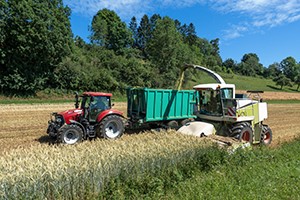Preventing Tractor Operator Accidents

Farming is a vital industry, not only in the US, but all across the world. It may not be as well known how dangerous it is. Each year, thousands of agricultural workers are injured and hundreds more die in farming accidents. According to the Occupational Safety and Health Administration (OSHA), most farming incidents involve tractors. Overturns and power take-off (PTO) systems are two major hazards.
OSHA provides the following guidelines for working safely in and around tractors.
Overturns are the leading cause of fatalities in agriculture, resulting in approximately 130 deaths per year. The majority of these accidents occur when tractors turn on their sides or tip over backward.
To avoid injury:
- Securely fasten the seat belt
- Where possible, avoid driving the tractor near ditches, embankments, and holes
- Stay off slopes too steep for safe operation
- Drive the tractor smoothly and without jerky turns, starts, and stops
- Reduce speed on rough, slick, or muddy surfaces and when turning or crossing slopes
- Use extra caution at row ends, on roads, and around trees
A PTO is a highly useful tool because it allows farmers to use power from the tractor’s engine to drive other machines and implements. However, they also pose safety hazards.
To avoid injury:
- Train users in safe and proper operation
- Only operate PTOs, including rear, mid- or side-mounted shafts, that are guarded either by a master shield or other protective guarding
- Keep all guards in place when machine is running
- Stop the engine, disconnect the power source, and wait for the PTO to stop before undergoing adjustments, servicing, or cleanings
- Ensure that everyone nearby is clear of the machine before starting the tractor
- Tie back and/or tuck in long hair and loose clothing
- If possible, avoid working alone. Should an accident occur, a co-worker may be able to stop the PTO in time to prevent more serious injury or death



